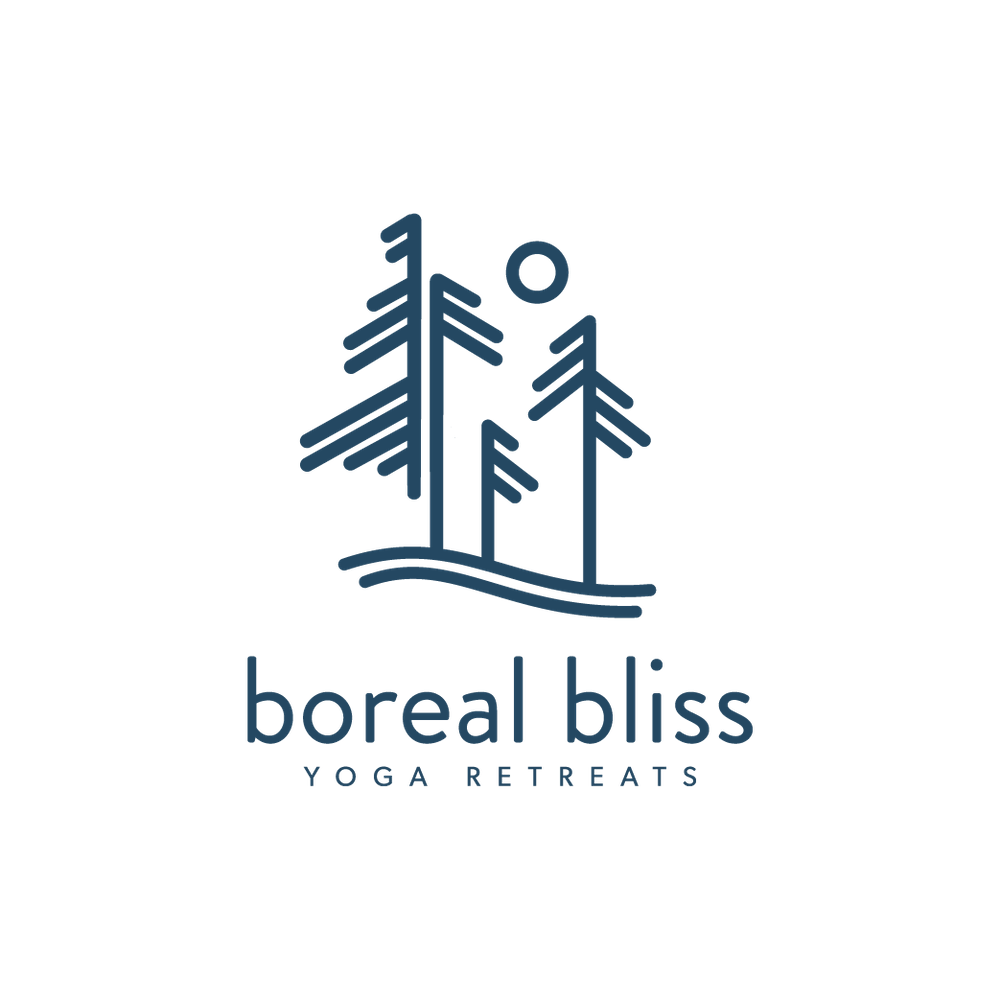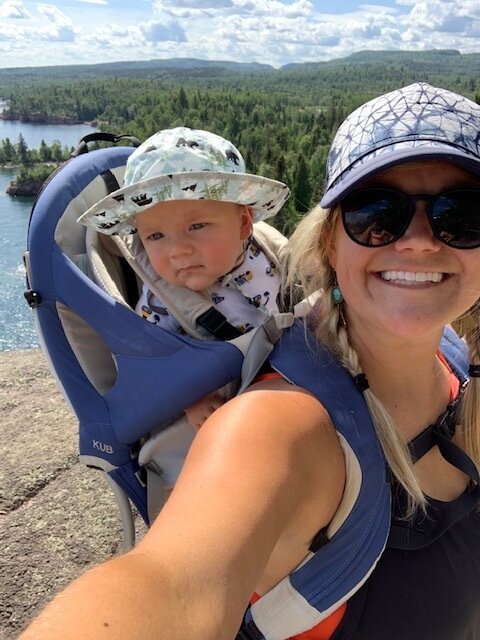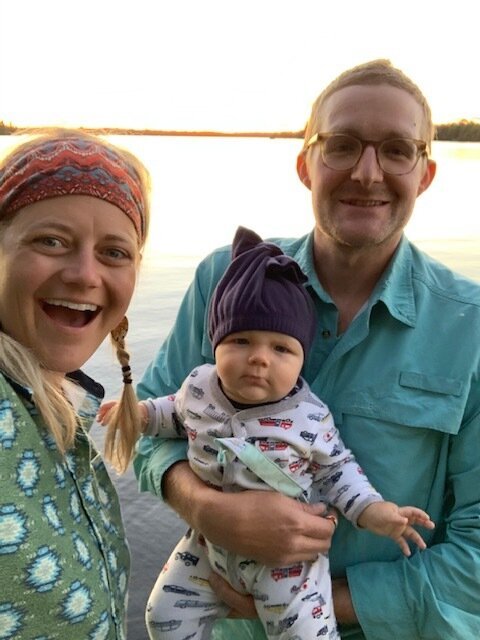Notes on Bringing a Baby into the BWCA
The Friday before Father’s Day in 2019, Drew and I headed to the BWCA. We were putting in at a familiar launch for us, the Fall Lake entry point. Just after we lost cell service, I asked Drew to pull over and grab a coat from the back. Tucked within my coat was a Father’s Day card. This is how I shared the news that we were expecting our first child, remarkable given the fact that I’m not very good at keeping secrets and my husband would make an excellent detective.
We were hauling the biggest purchase we’d ever made as a couple, other than our house and vehicles, a brand new Souris River Quetico 17. We were (and are) so proud of this canoe, such a vast improvement over the aluminum tanker we’d been hauling around the BWCA for years.
I was seven weeks pregnant, a time in pregnancy defined by intense fatigue. We launched later in the day and as the sunlight waned, it became difficult to see rocks. I was exhausted and we needed a campsite like… right now. We both cringed and stopped paddling as we heard the loathsome CREEEAAAKKKKK of our canoe scraping a rock. Our unmarred canoe had its first battle wound- the pregnancy scratch. It remains the most prominent scratch on our still new-to-us canoe.
Come summer 2020, we started camping and paddling with Oslo when he was four months old. I thought I’d share a few tips on taking a baby camping and/or into the BWCA.
Caveats and Disclaimers
A few caveats, we took Oslo in before he was crawling. This summer we’ll have the pleasure of attempting a trip with a toddler which will be a brand new experience!
Also, in general I am a low-stress mom and Oslo is a very healthy baby. I’ve never googled anything on Web MD and in general I am comfortable letting Oslo do things like go under a small waterfall with his Dad, swim in freshwater with his parents, etc, etc. If any of the things I just described do cause you stress, then camping with a baby may not be for you and that is okay! Every parent/child have different comfort levels and it’s important to respect those boundaries.
I am by no means an expert. This is my personal reflection.
I have done all of the following in a canoe:
nursed
soothed a screaming baby for what felt like hours but was more accurately probably 90 minutes
changed a poopy diaper while a Loon popped up within two feet of our canoe- a strange and beautiful moment
Stuff you’ll need
Travel Bassinet
We used the Munchkin Brica Fold N’ Go Travel Bassinet from Target. It folds up nice and compact and worked great to keep Oslo’s sleeping area separate from our own. We also used the pad in the bow of the canoe to make that area more comfy for Oslo while we paddled. Other things we found helpful include a travel noise machine and a sleep sack to keep baby warm. Another product in the picture below that is super helpful but has nothing to do with camping is the Anna & Eve transition sleep swaddle you can see here. This works well when baby is ready to be done with a full swaddle, but not quite ready for no swaddle at all. This allows babe to sleep with one arm out and one arm in.
The travel bassinet will keep baby safe from your sleeping space and sleeping bags, pillows, and blankets.
Infant Life Jacket
We used this adorable infant life jacket from LL Bean. He didn’t mind it at all until about six months, at which point it became more of struggle. The little flap behind the head works as a pillow when baby is resting in the bow of the canoe. You may notice that Oslo’s legs are quite um… tan. Oops! We did use sunscreen but baby was outside a lot, a lot a lot… Bad parents!
Sleeping Sack
While the temperature was warmer, we used a typical sleep sack with warm jammies. In late August we went to Lake of the Woods where the temperature hovered in the nineties (yikes!) The following weekend we went into the BWCA where temps dropped into the low 50s with a brisk wind. Minnesota- land of wild temperature swings.
We used this Little Mo 40, good for ages 6-24 months and 40 degrees. There is another version for 20 degrees, as well as a Big Mo for ages 2-4. Another brand we researched is Milk and Honey. They also make a version for both infants and toddlers. I think we will opt for this bag when Oslo outgrows the Little Mo because I like that the arms and legs can be mobile in this down sleep sack, ideal for busy little bodies. A tent thermometer may also be helpful in knowing how to properly dress your baby. We didn’t have one, but it’s a good idea.
Little Mo 40 Sleep Sack
Granite gear canoe accessories
Locally made in Two Harbors, Minnesota, Granite Gear makes great canoe accessories. For example, above Oslo’s head is a bow bag. This is where I stored toys, diapers, wipes, and any miscellaneous items he may need. Granite Gear are also avid supporters of Save the Boundary Waters and Friends of the Boundary Waters, two organizations working tirelessly to protect and preserve the Boundary Waters from harmful mining practices.
Framed Backpack Carrier & Sun Hat
We found a used Deuter framed backpack carrier. Works great for long hikes! Don’t forget a sunhat for little one! We did not bring the backpack into the BWCA.
**Fun note: doesn’t this photo look like a great hike? I mean, it was but… there were also 1) extremely annoying black flies in droves that do not respond to bug spray and hurt when they bite 2) both children screaming and crying likely due to the biting black flies 3) two pit stops to nurse and soothe Oslo on the 1.5 mile hike. But all in all, it still was a great time!
Great Lakes Gear Exchange in Duluth is a rad place to look for gently used gear for your adventuring needs.
This is one of my favorite easy hikes along the shore, the 1.5 mi Shovel Point Loop at Tettegouche State Park. A gentle hike for beginners and family with some of the best north shore views around! Don’t miss the stairs that take you down to the waters edge. This hike does involve many flights of stairs.
Solar Lights
These are definitely not a must-have, but a source of solar light to turn on for night feedings is helpful. I am obsessed with this adorable string of Luci Lights. They really bring our tent cuteness to the next level.
I mean seriously, look how cool these lights are.
A flexible attitude
The first time we took Oslo in a canoe we came up with an agreement.
If we were ever in a situation in nature when everything seemed to be going horribly wrong, we (the parents) will remain calm, collected and try to keep the experience positive.
Because we do not want our kids to associate nature with fighting or negativity, we are in full agreement that we must be united in being flexible, cool, and collected as we navigate obstacles in nature. So, when we took Oslo into the BWCA for the first time and it was 40 degrees colder than the prior weekend and we found ourselves with NO HAT FOR OSLO, we stayed calm and improvised. Here you will see a pair of fleece sweatpants tied on Oslo’s head. It worked great.
Improvisation is key in the BWCA. Forgot a hat? Tie sweatpants into a hat.
Plan your route
I’ve noticed a general attitude toward the BWCA is that it MUST include multiple days, multiple portages, and months of planning and preparation.
My husband and I bop into the BWCA multiple times each summer with very little planning. We look for an entry point with permits available and make a long weekend of it. That’s not to say that longer trips with more planning aren’t a ton of fun, of course they are! But I also want to point out that it can be more relaxed. It’s okay to pick a campsite very near the entry point and just make day trips with no portaging involved.
For Oslo’s first trip we picked an entry with a few small portages, but then camped at the first opportunity. While we were a few miles in, we could exit fairly quickly.
Lastly, a satellite phone to call for help is a good idea when camping with a little one.
“THERE was a child went forth every day,
And the first object he look’d upon, that object he became,
And that object became part of him for the day or a certain part
of the day,
Or for many years or stretching cycles of years.
The early lilacs became part of this child,
And grass and white and red morning-glories, and white and red
clover, and the song of the phoebe-bird,
And the Third-month lambs and the sow’s pink-faint litter, and
the mare’s foal and the cow’s calf,
And the noisy brood of the barnyard or by the mire of the pond-
side,
And the fish suspending themselves so curiously below there, and
the beautiful curious liquid,
And the water-plants with their graceful flat heads, all became part
of him.””














